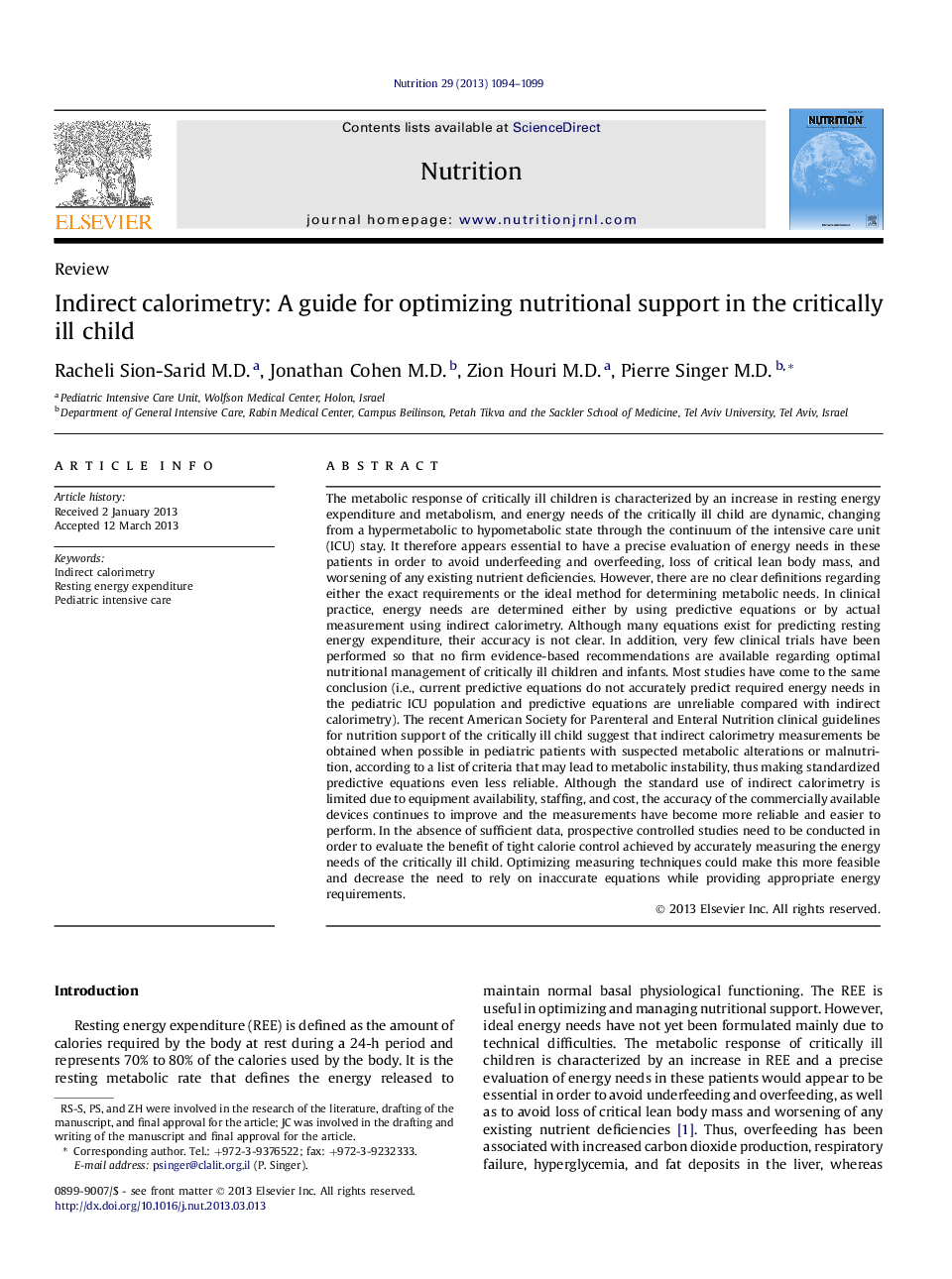| کد مقاله | کد نشریه | سال انتشار | مقاله انگلیسی | نسخه تمام متن |
|---|---|---|---|---|
| 6089937 | 1208562 | 2013 | 6 صفحه PDF | دانلود رایگان |
The metabolic response of critically ill children is characterized by an increase in resting energy expenditure and metabolism, and energy needs of the critically ill child are dynamic, changing from a hypermetabolic to hypometabolic state through the continuum of the intensive care unit (ICU) stay. It therefore appears essential to have a precise evaluation of energy needs in these patients in order to avoid underfeeding and overfeeding, loss of critical lean body mass, and worsening of any existing nutrient deficiencies. However, there are no clear definitions regarding either the exact requirements or the ideal method for determining metabolic needs. In clinical practice, energy needs are determined either by using predictive equations or by actual measurement using indirect calorimetry. Although many equations exist for predicting resting energy expenditure, their accuracy is not clear. In addition, very few clinical trials have been performed so that no firm evidence-based recommendations are available regarding optimal nutritional management of critically ill children and infants. Most studies have come to the same conclusion (i.e., current predictive equations do not accurately predict required energy needs in the pediatric ICU population and predictive equations are unreliable compared with indirect calorimetry). The recent American Society for Parenteral and Enteral Nutrition clinical guidelines for nutrition support of the critically ill child suggest that indirect calorimetry measurements be obtained when possible in pediatric patients with suspected metabolic alterations or malnutrition, according to a list of criteria that may lead to metabolic instability, thus making standardized predictive equations even less reliable. Although the standard use of indirect calorimetry is limited due to equipment availability, staffing, and cost, the accuracy of the commercially available devices continues to improve and the measurements have become more reliable and easier to perform. In the absence of sufficient data, prospective controlled studies need to be conducted in order to evaluate the benefit of tight calorie control achieved by accurately measuring the energy needs of the critically ill child. Optimizing measuring techniques could make this more feasible and decrease the need to rely on inaccurate equations while providing appropriate energy requirements.
Journal: Nutrition - Volume 29, Issue 9, September 2013, Pages 1094-1099
